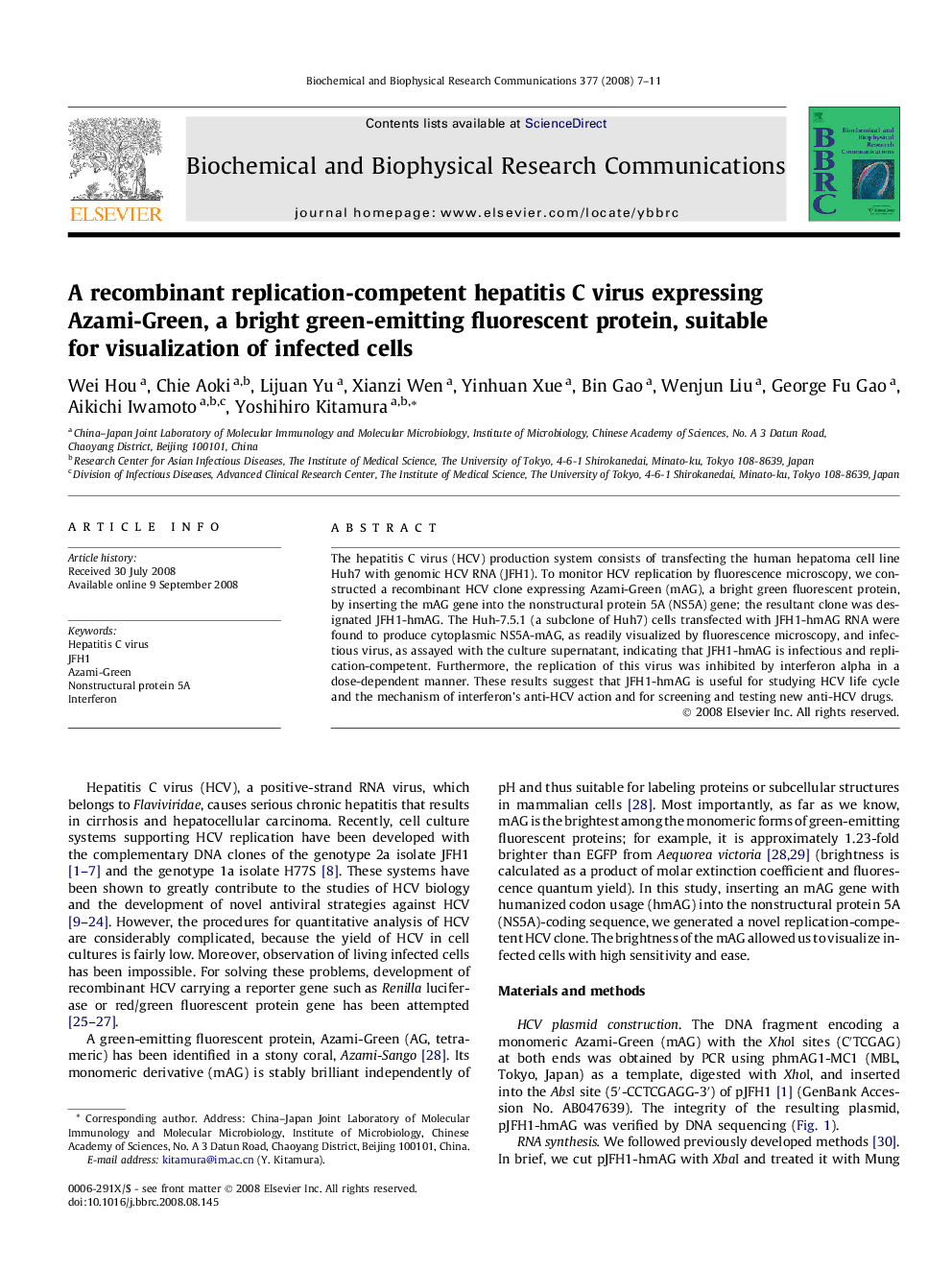| Article ID | Journal | Published Year | Pages | File Type |
|---|---|---|---|---|
| 1934183 | Biochemical and Biophysical Research Communications | 2008 | 5 Pages |
The hepatitis C virus (HCV) production system consists of transfecting the human hepatoma cell line Huh7 with genomic HCV RNA (JFH1). To monitor HCV replication by fluorescence microscopy, we constructed a recombinant HCV clone expressing Azami-Green (mAG), a bright green fluorescent protein, by inserting the mAG gene into the nonstructural protein 5A (NS5A) gene; the resultant clone was designated JFH1-hmAG. The Huh-7.5.1 (a subclone of Huh7) cells transfected with JFH1-hmAG RNA were found to produce cytoplasmic NS5A-mAG, as readily visualized by fluorescence microscopy, and infectious virus, as assayed with the culture supernatant, indicating that JFH1-hmAG is infectious and replication-competent. Furthermore, the replication of this virus was inhibited by interferon alpha in a dose-dependent manner. These results suggest that JFH1-hmAG is useful for studying HCV life cycle and the mechanism of interferon’s anti-HCV action and for screening and testing new anti-HCV drugs.
